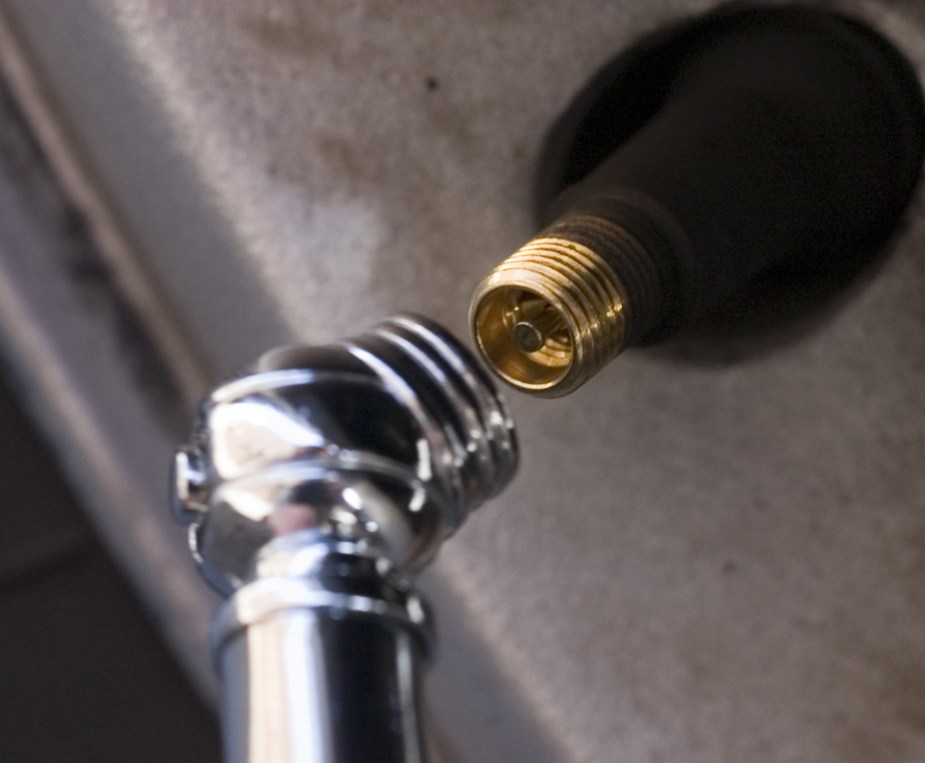
What Should Your Tire Pressure Be and How Do You Know?
If you don’t regularly put air in your tires, you might be having some performance issues while driving. When tires don’t have enough air, the tread wears down prematurely. A new set of tires is often quite expensive, so taking care of your current set is essential.
Every automaker usually recommends a different optimum tire pressure reading for its vehicles. The sooner you know what that is, the quicker you can save your poor tires from unnecessary wear and tear.
Just how much trouble can underinflated tires cause?

Tires without enough air have more rolling resistance, so you’ll use more gas than necessary. According to the EPA, you can save up to 3% at the pump if all of your tires are inflated properly. With gas prices as high as they are, every little bit helps.
When consistently riding on a tire without enough pressure, it’s bound to go flat eventually. You won’t be able to drive on one, so you’ll have to disrupt your trip and replace it immediately. If you don’t have a spare tire and jack handy, you’ll also be waiting on roadside assistance.
Underinflated tires can also affect your car’s handling long before they go flat. You’ll have less traction around corners, and you won’t be able to stop your car as quickly. Low tire pressure can also hinder evasive maneuvers, making you more likely to get into an accident.
Low tire pressure can also put undue stress on various other mechanical components. Your suspension will have to work harder when your tires can’t properly absorb impacts from road imperfections. Your car’s wheels and braking system can also be negatively affected.
What’s the ideal tire pressure for my car?
According to Cars.com, the average recommended is 32-35 psi on passenger cars. For a more approximate pressure recommendation, you can refer to the owner’s manual for your vehicle. You should also be able to find the ideal tire pressure on the sticker inside your car door.
You’ll get the most accurate tire pressure readings when your tires are cold, meaning your car hasn’t moved for a while. Driving increases the air pressure in your tires because of the friction after coming in contact with the road.
Of course, we know that many drivers get air in their tires when they stop for gas. In this case, AAA recommends putting at least 2 psi extra of air in each tire to compensate.
Overinflated tires can still be potentially dangerous, but only in exceptional circumstances. For example, if you run over a nail at high speeds, the tire will lose air more rapidly and likely cause a blowout.
To find out exactly how much air a tire can safely hold, look at the pressure numbers on the tire itself. You shouldn’t run into any major problems if you don’t exceed that number. However, overinflated tires can also wear down faster and make your ride bumpier than usual.
Watch out for tire pressure fluctuations
Heat raises the pressure in your tires, so it only makes sense that extreme cold will decrease the pressure inside. That’s why it’s so important to check your tire pressure more frequently in winter. A good rule of thumb to remember is that you’ll lose 1 psi per tire for every 10-degree Ferienheight drop in temperature.
Pressure fluctuations in the summer are less of a problem. Even in the hottest regions, your tires will never naturally become so overinflated that you can’t drive safely. Still, always keeping your tires at the recommended pressure is vital to preserving them and staying as safe as possible on the road.


